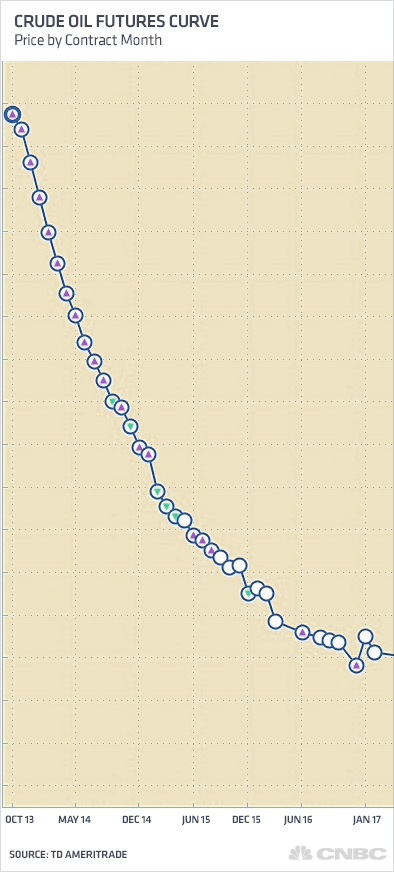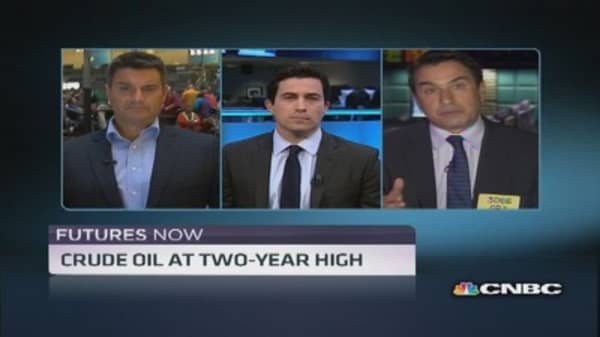How, then, does one profit off of this situation?
"Maybe the ultimate trade is to sell that front month and buy the back," Grisanti said. If any Syrian military action "turns out to be quick and dirty, and you see no response from Russia or anybody else, oil is going down."
(Vote in our poll: Where will crude oil end the year?)
But Jeff Kilburg, a "Futures Now" contributor and the founder of KKM Financial, believes that the already-steep curve could steepen further.
"We have had a huge increase in domestic production. We're seeing demand change for Americans as we try to focus on alternative energy, and we have geopolitical issues out front," Kilburg said. When it comes to backwardation, "Is there more room to stretch this rubber band? Yes."
For his part, Schork said "you can't sell this market yet." After all, "higher prices are now the justification for higher prices, and you have the greed element pushing prices higher and higher."
Still, he believes that crude oil is about to provide a perfect example of "why markets fall faster than they rise. That's certainly the scenario we're building up right now. The question is, do we fall from $115, $125, or $150?"
Schork added: "We'll just have to wait and see when we get that breaking point."
















